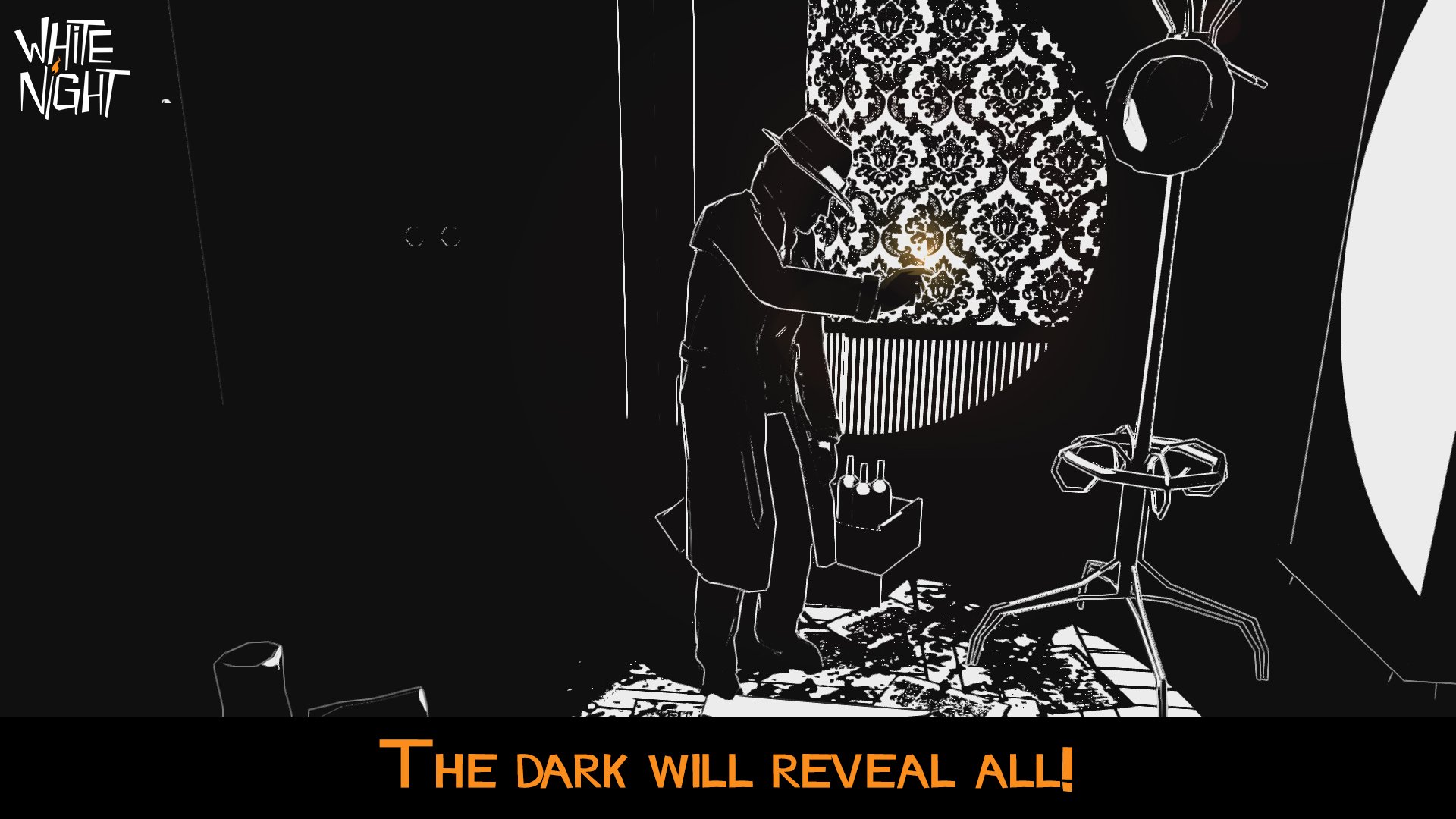The (very) dark corner.
If you were interested in White Night prior to its release, it was likely due to its distinctive art style and obvious film noir influences. I’m happy to report that rather than merely being a unique selling point, its developer Osome Studio has ensured that its black-and-white visuals (calling it monochromatic would suggest that there are hints of gray, of which there are none) facilitates its gameplay, with a wealth of light-based puzzles making up the majority of its length. Unfortunately, its minimalist aesthetics also stand to actively hinder its gameplay.
White Night sees the player assuming the role of a detective, complete with the grizzled voice of a man who spends his nights with his lips pressed around the rim of a glass filled with bourbon, befitting of the pulp theme, exploring the eerie Vesper Mansion after crashing his car outside of its grounds. Stalking the angelic ghost of a woman throughout the mansion’s many rooms in the hope that she will lead him to an exit, or at least a decent explanation as to what on Earth is going on, the majority of the time I spent within the claustrophobic confines of my dimly-lit surroundings consisted of maneuvering light sources in order to expose objects hidden with my environment, lighting matches to ensure that I wasn’t completely engulfed in darkness and desperately running away from the game’s many aggressive ghouls. Unlike the aforementioned nice ghost lady, these particular apparitions are less interested in helping you as they are clawing out your eyes.
White Night’s use of its visual style when it comes to its plethora of puzzles is initially engaging, though somewhat simplistic, asking you to control desk lamps and the like in order to highlight certain areas of each room, allowing previously unseen objects to be interacted with. However, once the initial appeal of its art wore off, traversing through the mansion became a laborious chore as its style stood to overshadow its gameplay, leaving me hopelessly bumping along walls and furniture with nothing but the small light from my matches to guide me.
The use of matches, which must be replenished using match boxes littered plentifully throughout the environment, initially seemed like it would give way to some terrifying scenes with ghostly enemies. When a match is extinguished, which will happen without warning, you must stand still in order to strike another one, with them often not lighting on your first attempt. This should insert some chaos into proceedings, but as the game progresses, the only thing it inserts is frustration given that even when the matches are lit, you’re still essentially ambling around in pitch black with only a few footsteps ahead of the player-character made visible.
This means that you can never accurately get a sense of your surroundings, and are therefore always uncertain of what could be hiding around the next corner. While this is conceptually a great mechanic for a horror game, the complete lack of spacial awareness afforded to the player eventually grows tiresome. White Night also adopts the fixed camera angles of another game set in a creepy mansion, Resident Evil, but whereas in RE each room was distinguishable from the last, White Night’s blend into one black-and-white jumble.
It’s a shame, too, because there’s a lot that White Night does right. It nails its theme down to a tee, with everything from its heavy-handed dialogue to its piano-led score, featuring haunting original compositions mixed with the obligatory, but still impactful, addition of ‘Clair de Lune,’ all contributing to a game dripping with that cynical coolness of the ‘40s classic era of film noir. Its story, too, remains engaging, and, up until its rather predictable conclusion, compellingly ambiguous, even if it does unfortunately perform one of my major gaming no-no’s by opting to relay much of its context within the form of collectible notes, newspapers, and diary entries scattered throughout its setting.
However, White Night is another game which has remained stubbornly devoted to its art style to the detriment of the actual game tucked away beneath it. It remains faithful to its influences and loyal to its theme, but when its misgivings contribute to make it such an irritating experience, it’s impossible to overlook them.
Copy purchased by reviewer. Review based on PC version. Also available for Xbox One.
-
Thoroughly embraces its noir theme.
-
Gorgeous, minimalist visuals.
-
Wandering around aimlessly in the dark.
-
A story mostly told through notes.
-
A story mostly told through notes.
-
Disappointing conclusion.
-
Another case of style over substance.
white-night
-
white-night #1
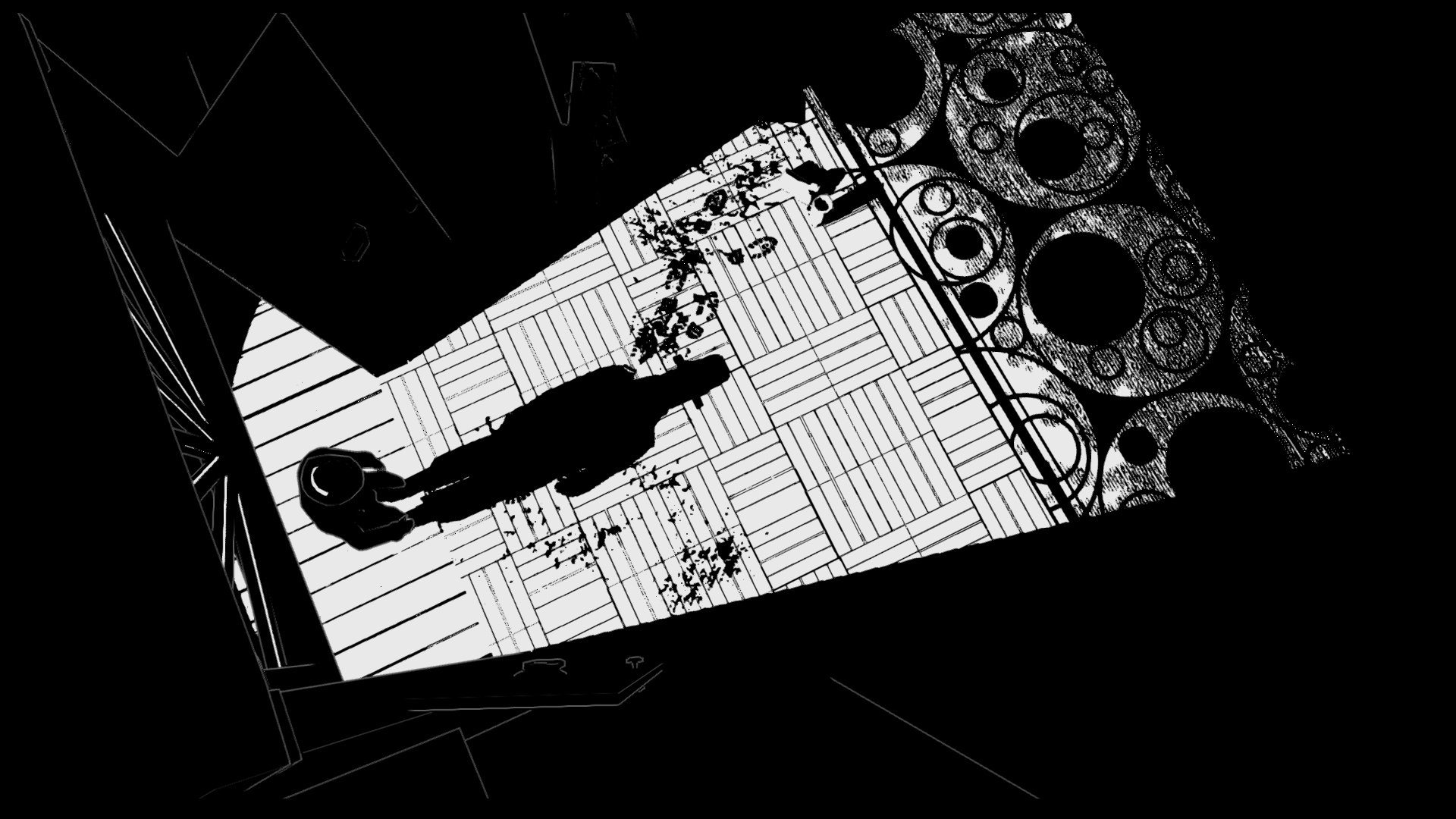
-
white-night #2
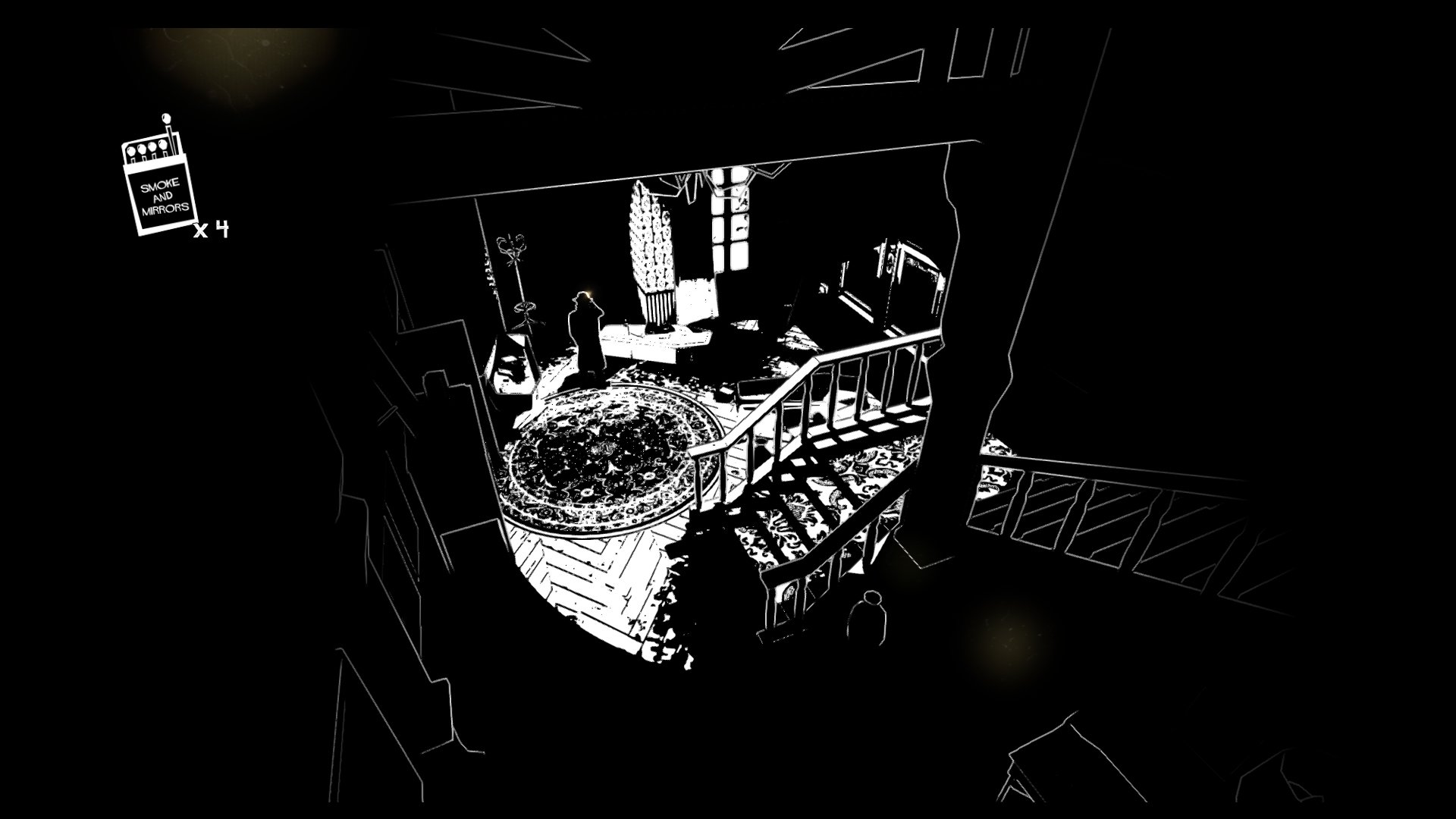
-
white-night #3
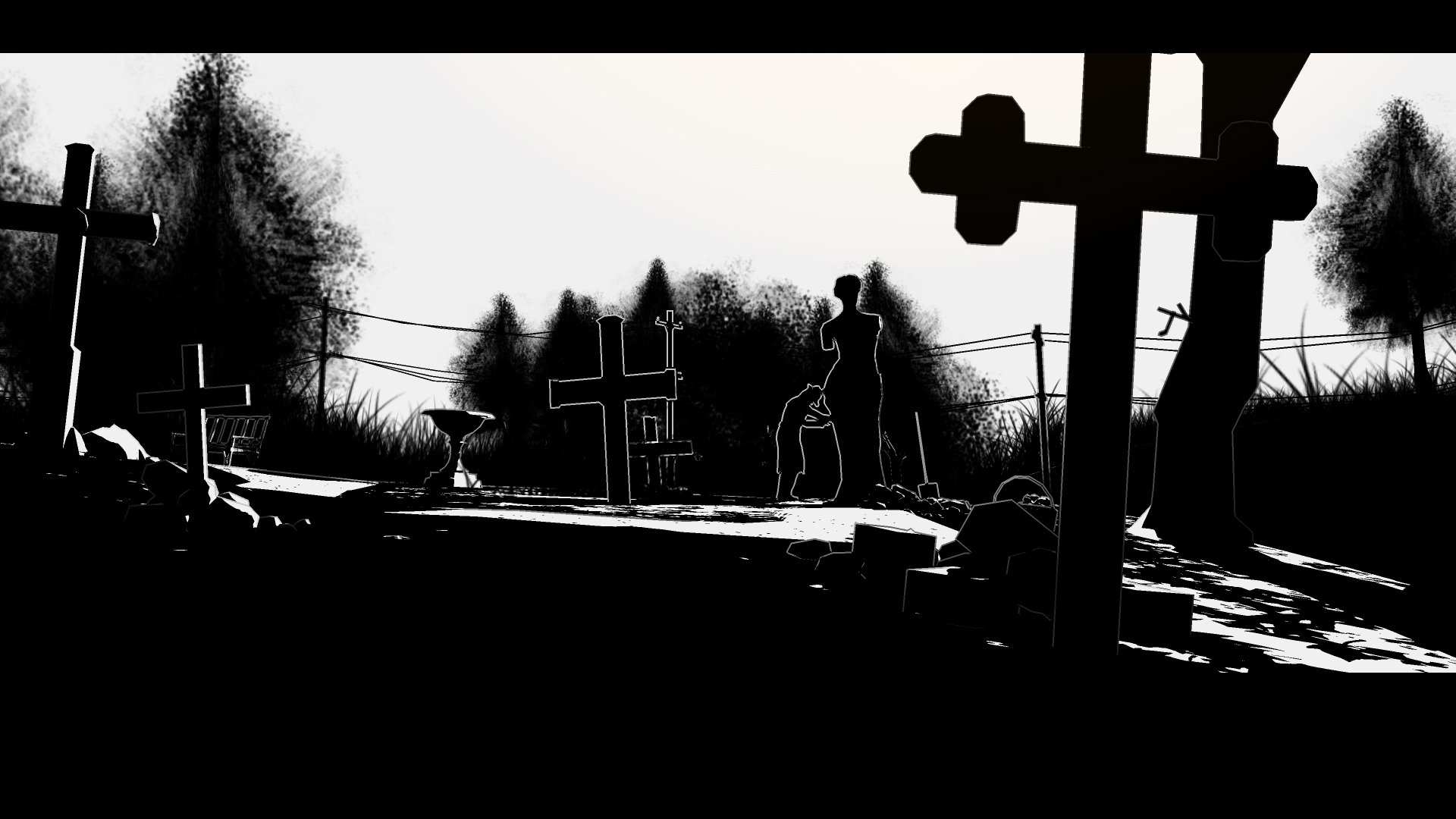
-
white-night #4
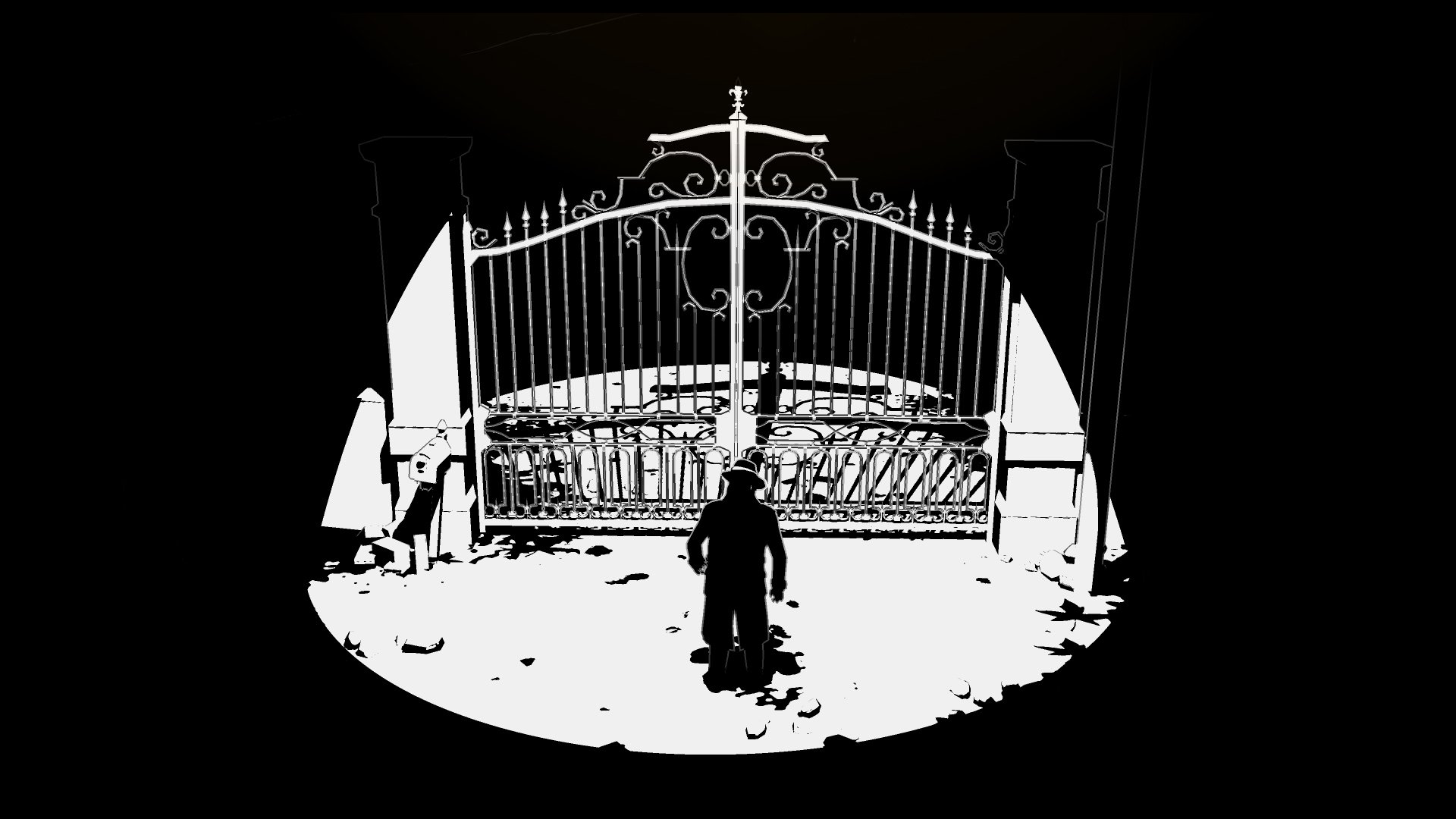
-
white-night #5
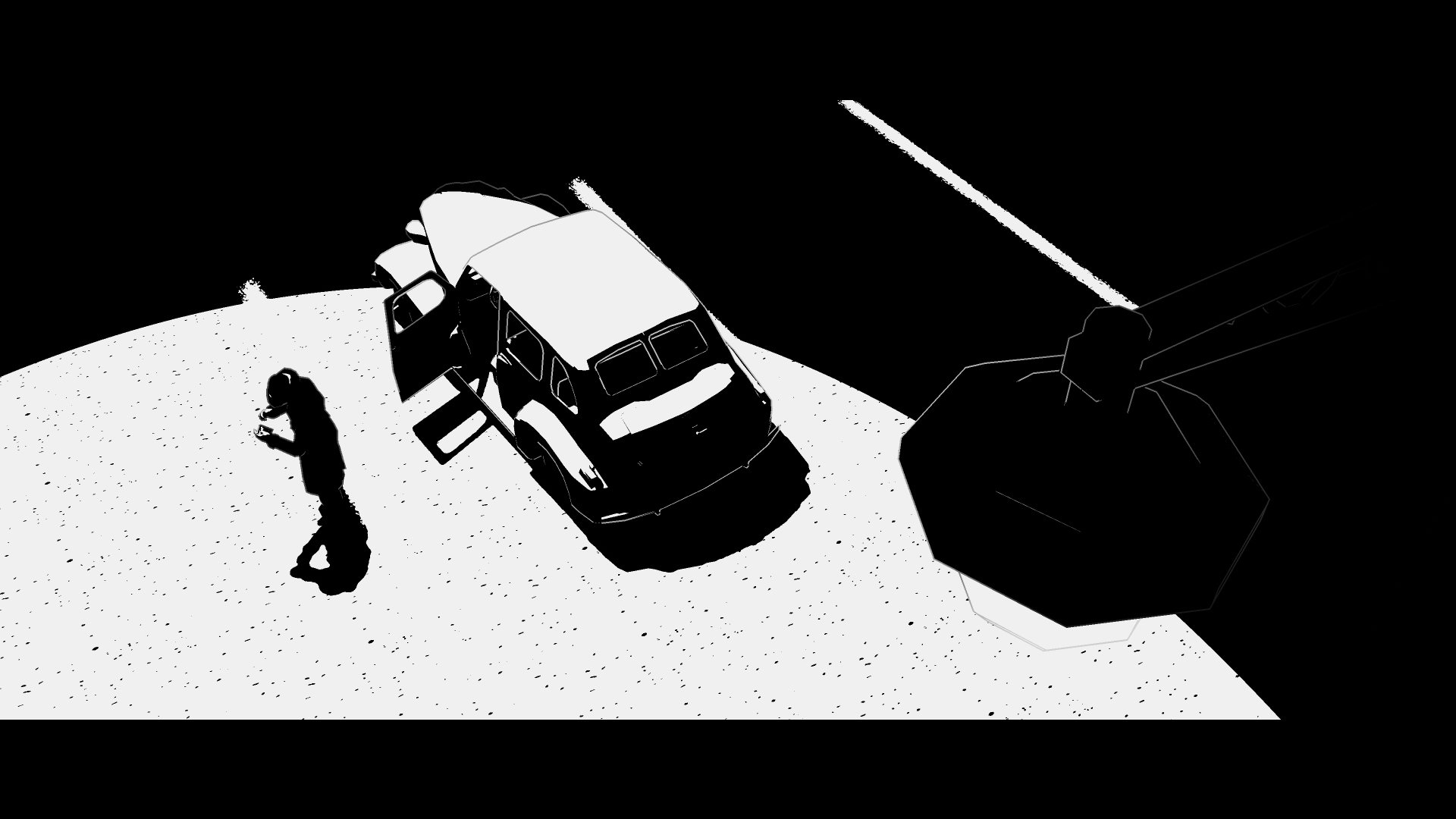
-
white-night #6
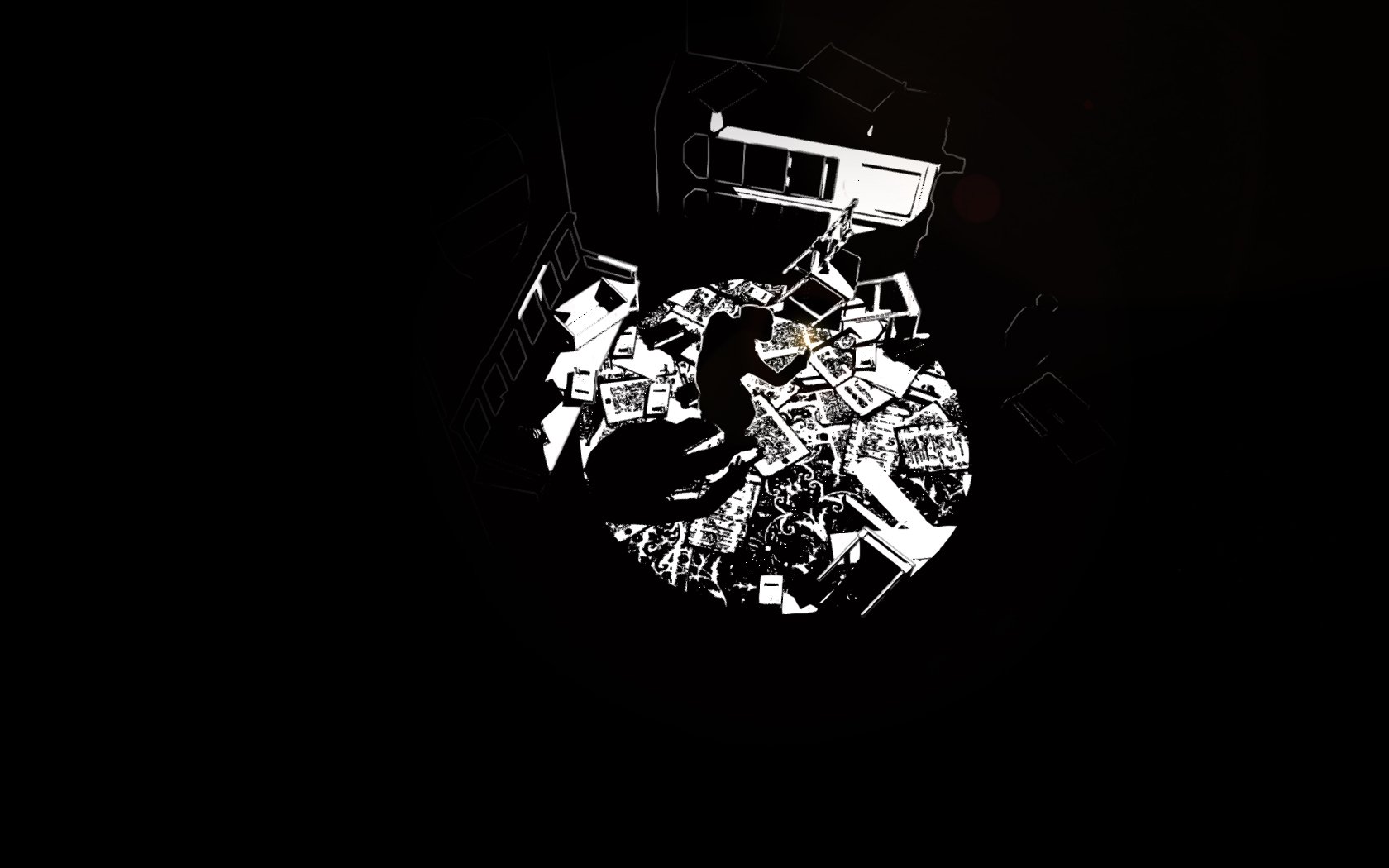
-
white-night #7
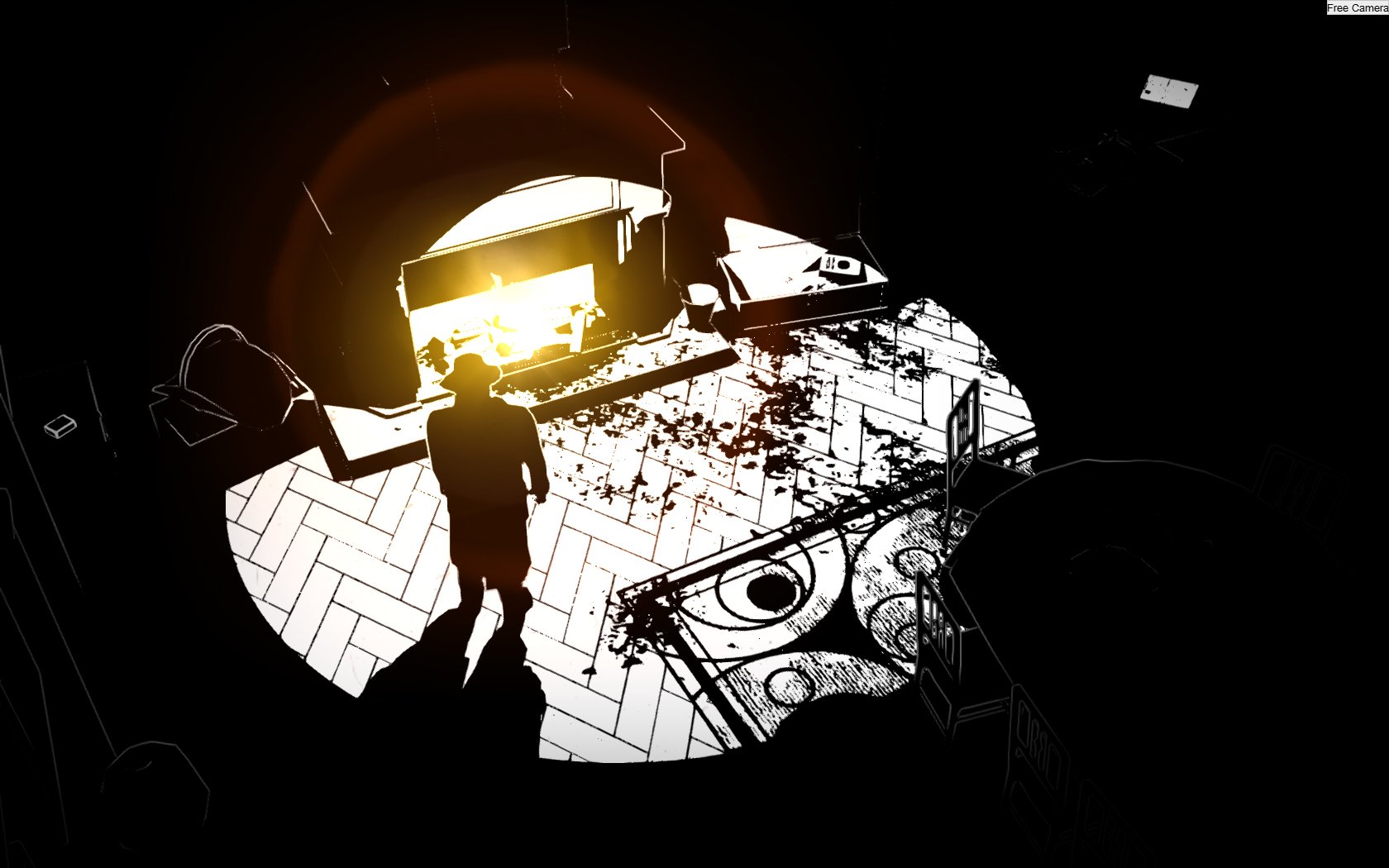
-
white-night #8
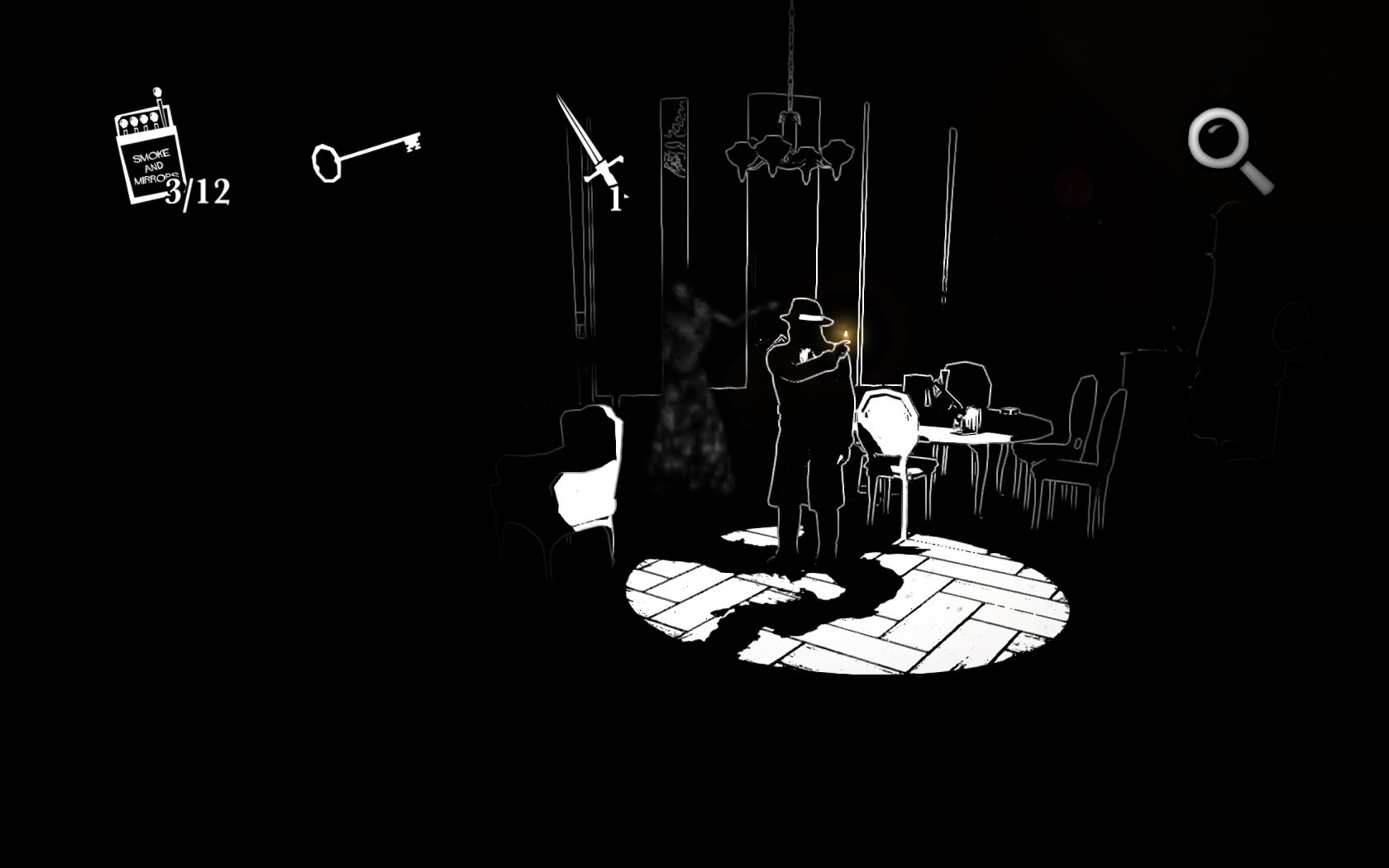
-
white-night #9
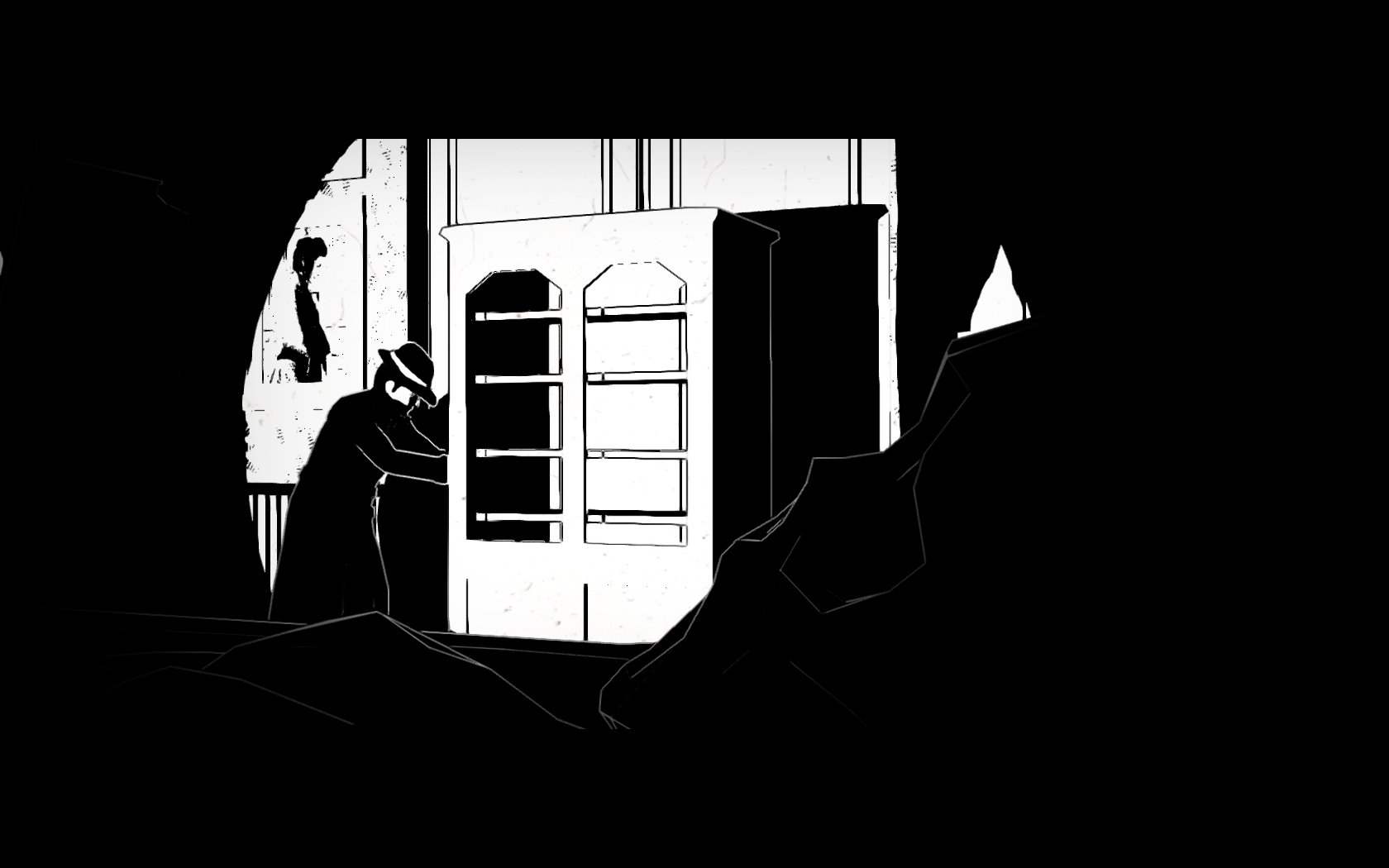
-
white-night #10
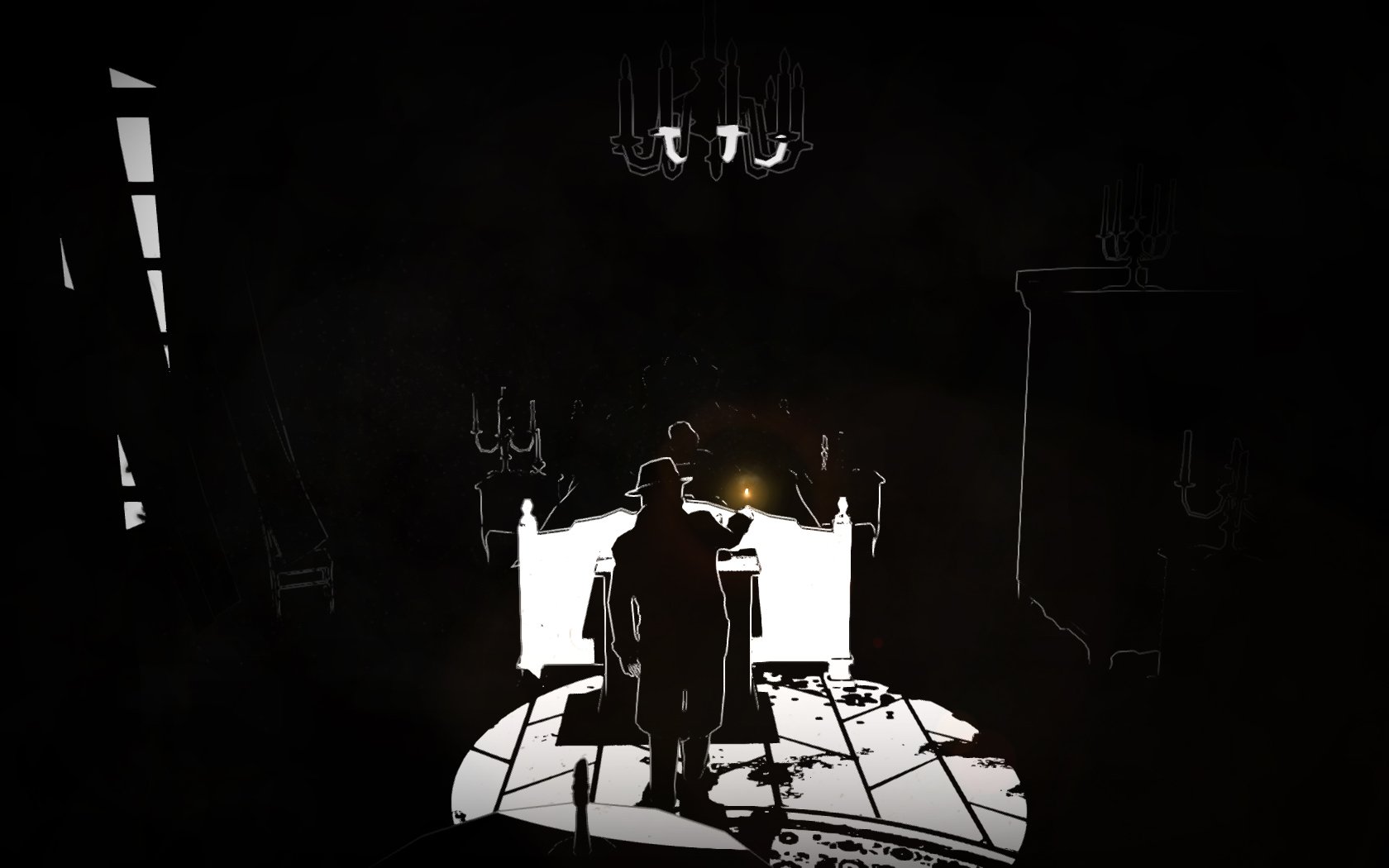
-
white-night #11
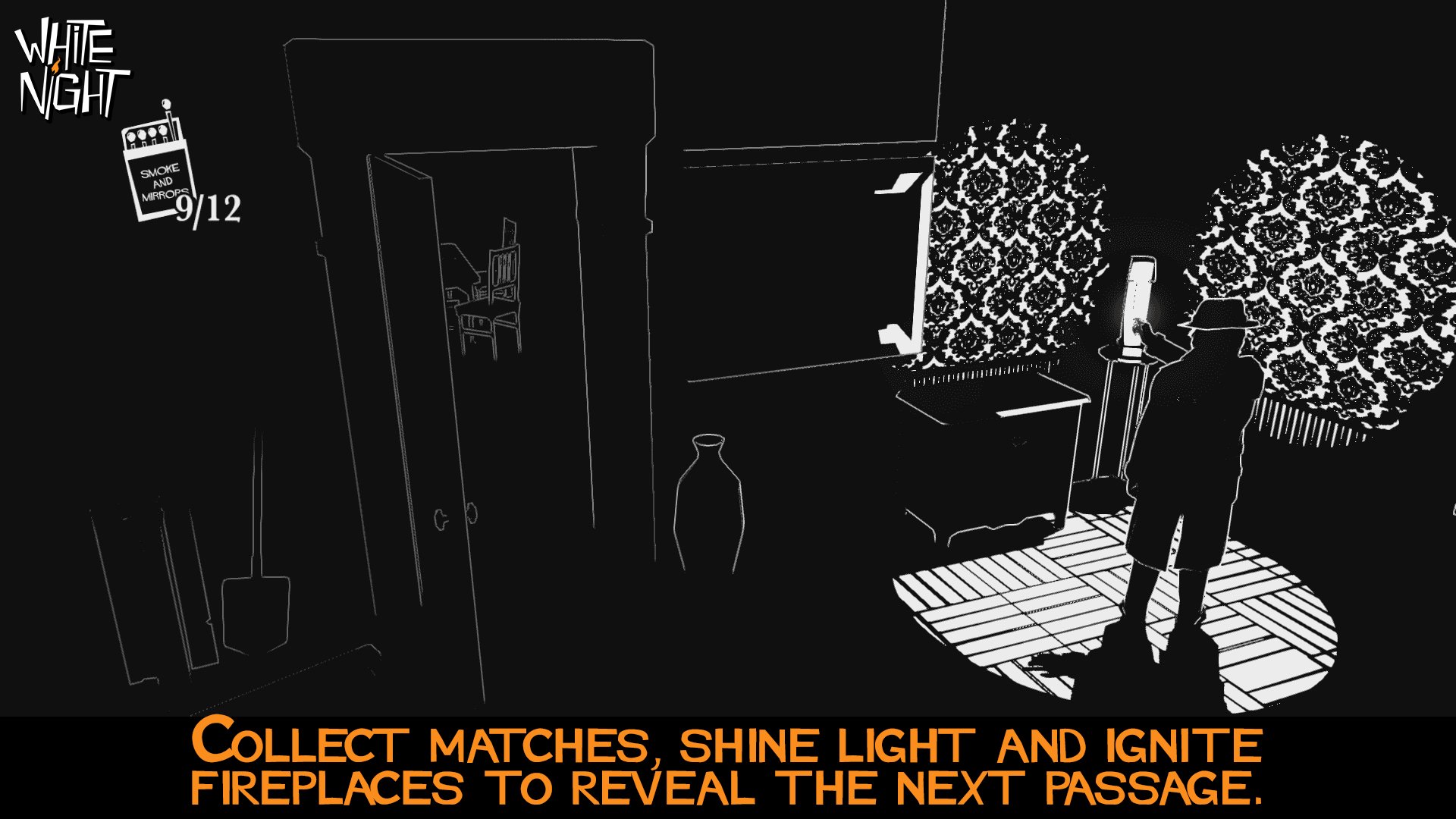
-
white-night #12
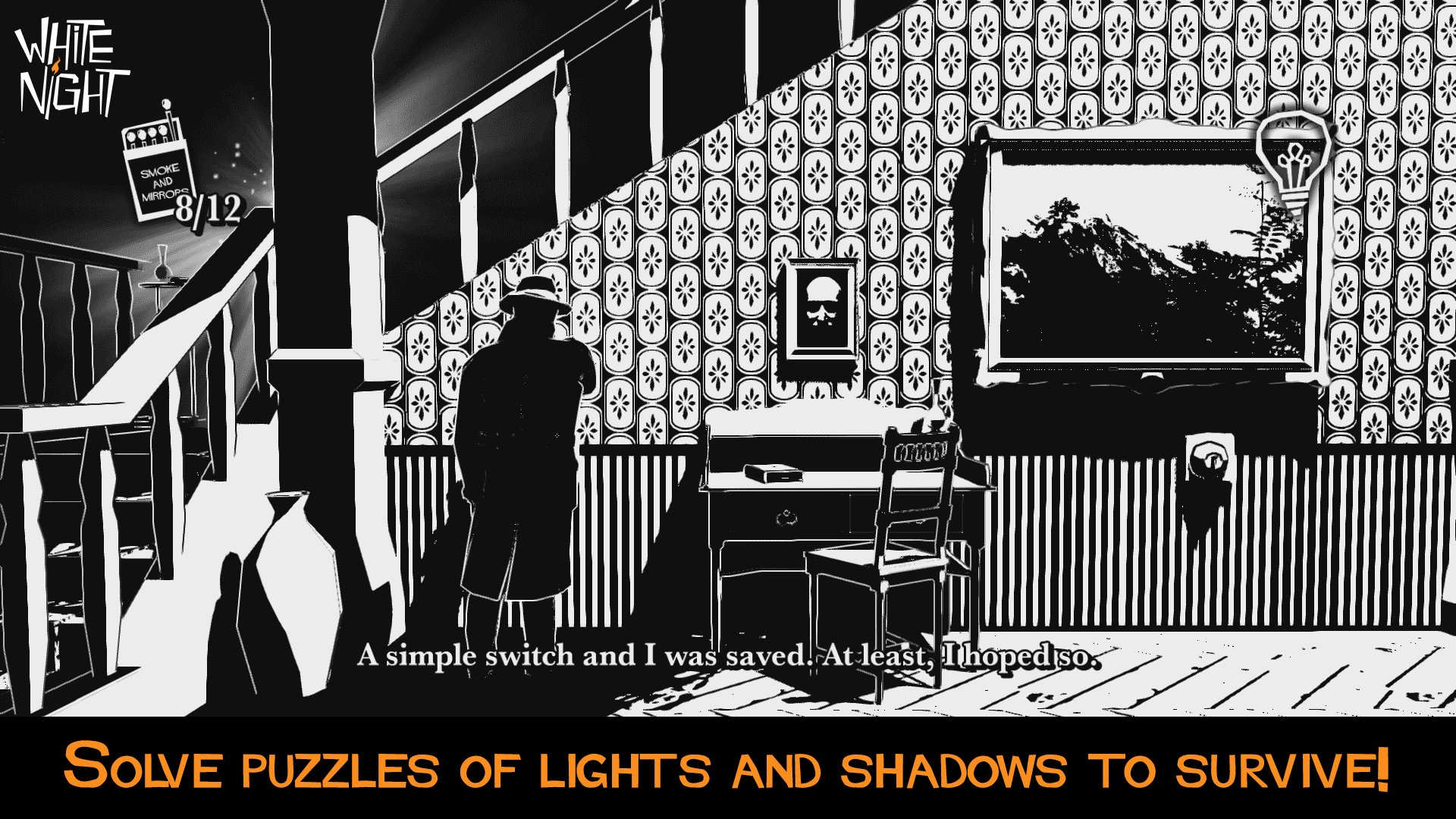
-
white-night #13
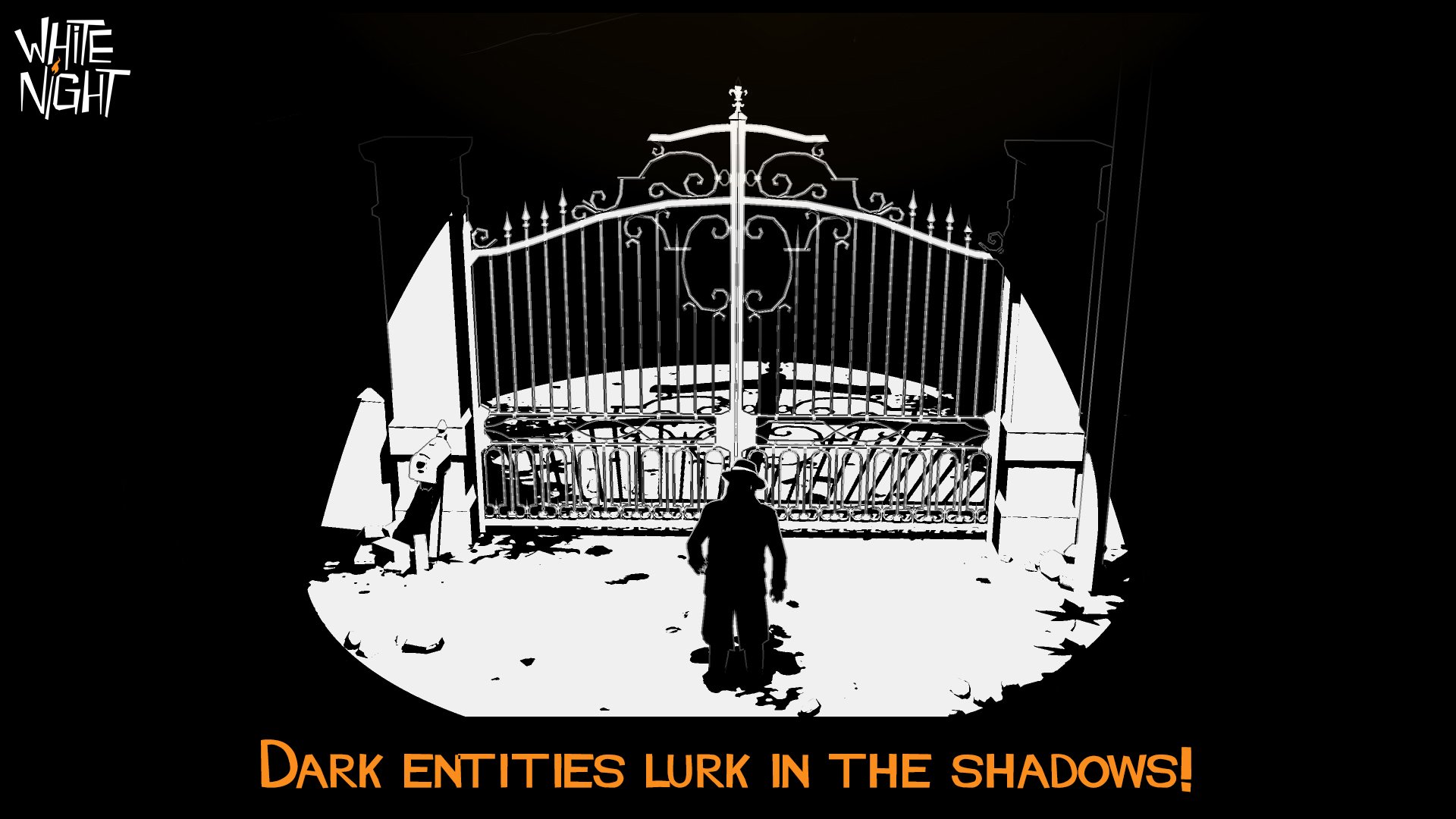
-
white-night #14

-
white-night #15
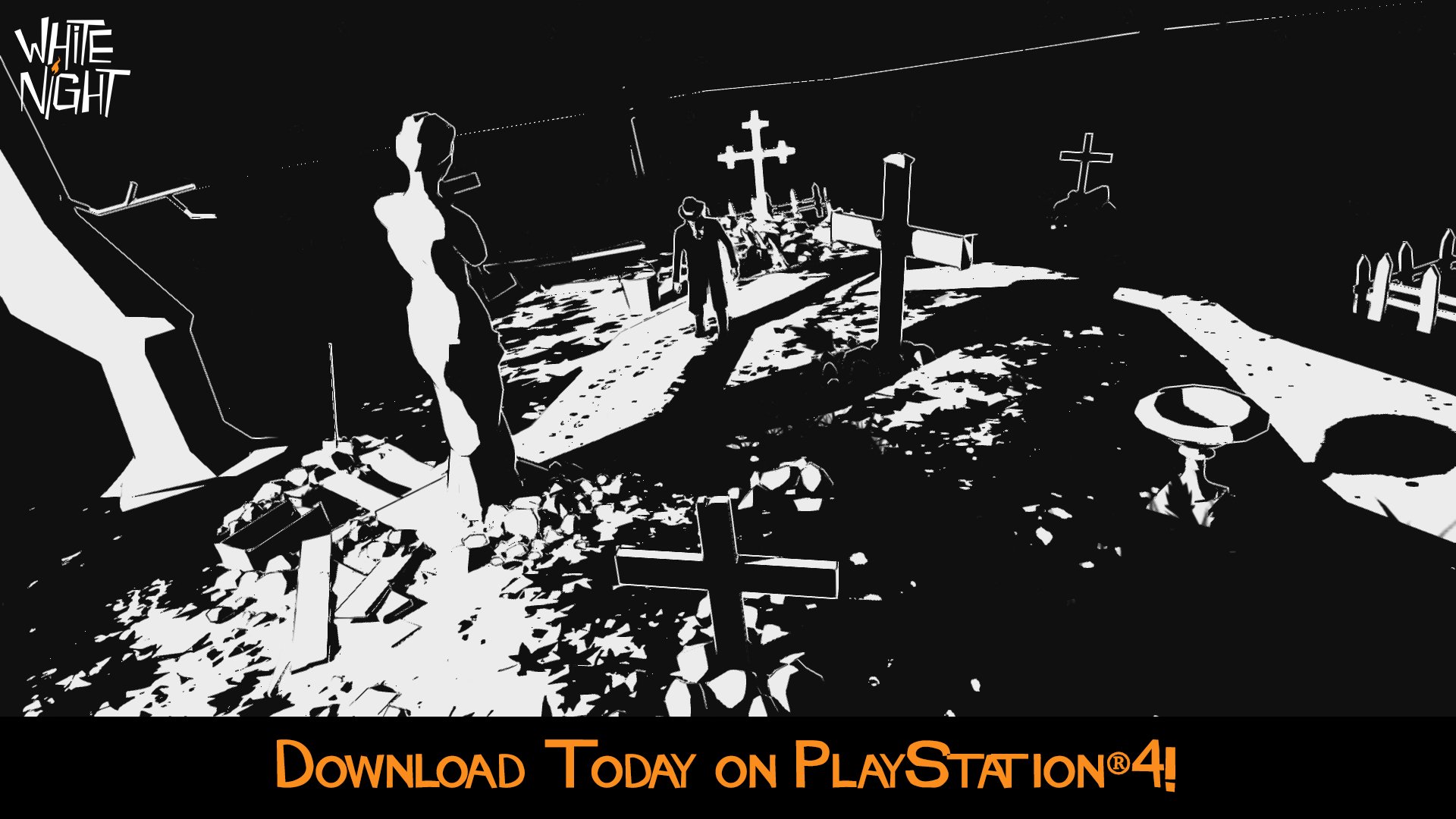
-
white-night #16
